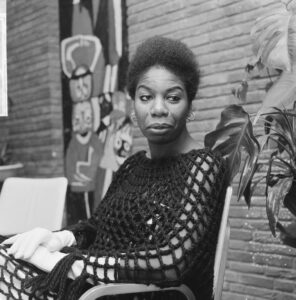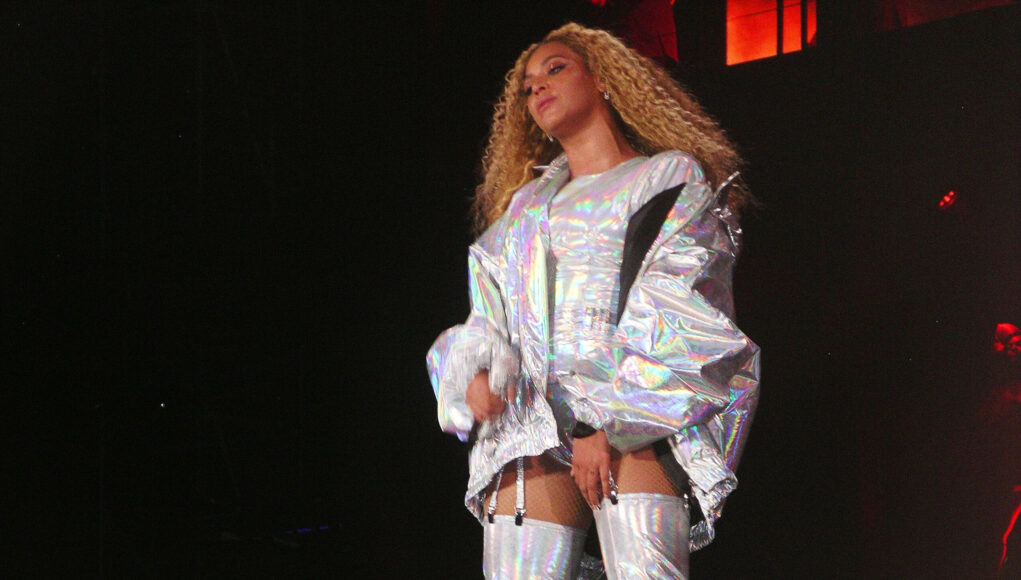By Katie Kapurch, Texas State University and Jon Marc Smith, Texas State University
Prior to the release of “Cowboy Carter,” Beyoncé explained that her album’s links to country were motivated by industry gatekeeping. She was likely referencing the hostile reception she experienced after her performance of “Daddy Lessons” with The Chicks during the 2016 Country Music Awards.
Feeling “unwelcome,” Beyoncé said she decided to delve into Black Americans’ “rich musical archive” for inspiration, and “Cowboy Carter” became a project akin to her previous album, 2022’s “Renaissance” – a way to teach listeners about Black music and Black history.
One of the songs, “Blackbiird,” is a rendition of the Beatles’ “Blackbird,” from their 1968 White Album. The Beatles’ “Blackbird” has a folk bent, but they were certainly influenced by country and other American genres, especially Black rhythm and blues. All of this musical history comes together in Beyoncé’s cover of “Blackbird,” whose composer, Paul McCartney, has a producer credit.
Beyoncé’s version appears to retain the Beatles’ instrumentation, incorporating McCartney’s acoustic guitar and foot tapping. But, importantly, Beyoncé also includes the voices of four Black female country singers: Tanner Adell, Tiera Kennedy, Reyna Roberts and Brittney Spencer.
Black musicians have long used the symbol of the blackbird to describe their careers – the isolation they’ve felt and the discrimination they’ve faced along the way. To appreciate Beyoncé’s “Blackbiird,” we think it’s important to go beyond the shadow McCartney’s song has cast over the symbol.
The legend of McCartney’s ‘Blackbird’
Many listeners hear the Beatles’ “Blackbird” as a civil rights song. Part of that may have to do with the evolving ways McCartney has talked about the song in the decades since its release, which we address in our 2023 book, “Blackbird: How Black Americans Sang the Beatles Into Being – and Sang Back to Them Ever After.”
After the release of the White Album, McCartney did mention “civil rights” and “riots” during a recording that captured a conversation about the track with the singer-songwriter Donovan. McCartney also mentions the “offense” Diana Ross took when he played “Blackbird” for her.
For the next three decades, though, he didn’t publicly connect the track to civil rights. Then, in Barry Miles’ 1997 biography of McCartney, McCartney says “a Black woman” was the inspiration for “Blackbird.”
In the 21st century, however, McCartney has been keen to make connections to various places and events associated with the movement during live performances. He mentioned “the Southern states” in 2002; by the 2010s, he started regularly identifying “Alabama” and “Arkansas.” Then, once McCartney specified “Little Rock,” he drew an even clearer connection to the Little Rock Nine, who integrated Central High in 1957. That year, a teenage McCartney was auditioning for John Lennon at the Woolton Village Fete in Liverpool, England, 11 years before “Blackbird” was composed and recorded.
Whatever the origins, McCartney now clearly wants listeners to hear his song in relation to civil rights and current movements like Black Lives Matter.
We aren’t suggesting McCartney’s feelings about these movements are insincere. But when we trace the evolution of his stories, we see the former Beatle working in earnest to emphasize “Blackbird” as a civil rights anthem after the fact.
Dreams of the skies
With “Blackbiird,” Beyoncé reasserts a legacy of Black artistry that predates McCartney. Centuries before the Beatles, birds and flight served as powerful symbols in Black storytelling and arts.
Enslaved Africans in the Americas imagined freedom by circulating tales about gaining the ability to fly. Their return home to Africa became possible when a spiritual leader arrived with a “secret password,” one that would allow them to soar as a flock.
Children’s author Virginia Hamilton’s illustrated retelling of the myth compares flying Africans to “blackbirds” with “Black, shiny wings flappin’ against the blue up there.”
The trope finds expression in lonely birds, too; some versions of the myth center on a single bird or flying person. The absence of a flock and the inability to fly are metaphors for slavery’s brutality, particularly the ways in which families were torn apart.
Blackbirds take flight
Black musicians in the 20th century often used birds to explore themes of isolation and discrimination. Sad, dejected birds populate the blues, including Lonnie Johnson’s 1926 song “Blackbird Blues.”
“If I was a blackbird, I’d pack my troubles on my back,” he mournfully sings. “I would leave this world, and I never would look back.”
Then there was Florence Mills, one of the most famous Black American stage performers in the 1920s.
Mills debuted “I’m a Little Blackbird Looking for a Bluebird” in 1924. The lyrics are explicit: She wants to find “a bluebird” – a metaphor for happiness – the kind that “white folks” are allowed to pursue.
Although Mills didn’t compose it, the song became one of her most well-known and an anthem for racial tolerance.
In interviews, Mills also detailed the song’s symbolism, connecting the bird’s predicament to the lack of opportunities Black Americans faced. With her talent and success, she felt an obligation to her community.
The blackbird of show business
Nina Simone co-wrote and released “Blackbird” in September 1963, five years before the Beatles released the White Album.
While Mills’ blackbird yearns for something better, Simone’s pessimistic speaker tells “little sorrow” not to bother trying to fly. McCartney’s “Blackbird” is upbeat, and its entreaty to “Take these broken wings and learn to fly” seems like a hopeful response to Simone’s “Blackbird,” although he has never mentioned the connection.

Nina Simone by Ron Kroon / Anefo CC0 1.0
Like Mills, Simone has used the image of a blackbird to describe her career and its obstacles.
“I am the blackbird of show business,” Simone announced in a 1963 interview with Newsweek.
The discrimination Simone experienced throughout her life included a rejection from Philadelphia’s Curtis Institute of Music – a racially motivated exclusion that echoes Beyoncé’s own experiences with the country music industry.
Bringing Black artists into the light
Beyoncé is far from the only Black artist to cover the Beatles’ “Blackbird.”
Ramsey Lewis was first to do so, in 1968. He was followed by Billy Preston, the Paragons with Roslyn Sweat, Sylvester James, Jr., Bobby McFerrin, Alicia Keys and Bettye LaVette, the last of whom we interviewed for our book.
LaVette has performed her interpretation since 2010. She tweaks the lyrics, reciting them in the first person and turning the song into a meditation on her own struggles and triumphs. The song appears on LaVette’s 2020 album, “Blackbirds,” a tribute to Black women forebears.
“My bridges,” LaVette called the artists whose songs she interprets, including Simone’s “I Hold No Grudge.”
In the myth of the flying Africans, a community’s leader is responsible for its uplift. There are echoes of this imperative in “Cowboy Carter,” a record premised on recovering Black contributions to the country genre. The album is full of collaborations with other musicians, from the famous to the relatively unknown.
Beyoncé’s platform has already elevated the four young Black women featured on “Blackbiird.” In this way, the artist continues her broader project of linking the past to present, of giving other Black artists the space to come out of the darkness and into the light.
Perhaps the familiar sounds from the Beatles’ 1968 track will encourage listeners to think about what’s different in 2024: Black women’s voices harmonising with each other. The effect prevents listeners from planting their feet in one voice, one genre, or one century – an experience that can be both destabilising and liberating.
Like flying.
Katie Kapurch, Associate Professor of English, Texas State University and Jon Marc Smith, Senior Lecturer of English, Texas State University
This article is republished from The Conversation under a Creative Commons license. Read the original article.







